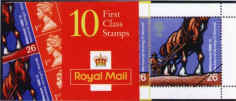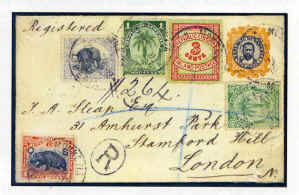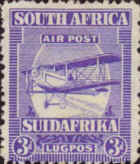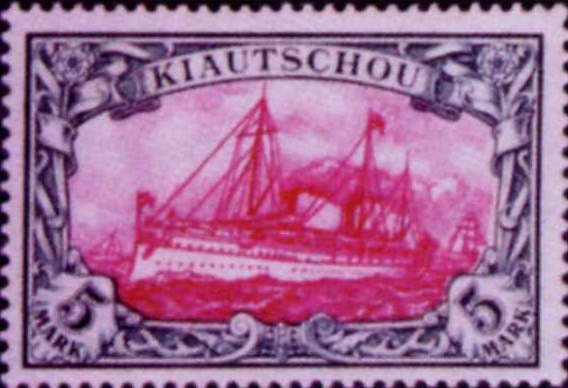|
|
|
|
|
What is Thematic
Collecting?
|
|
Thematic
Collections
|
At one time stamp collections consisted of stamps from one country or a group
of countries and were generally di splayed in date of issue order.
However, there is another way of collecting and displaying stamps. Thematic
Collections consist of stamps
that illustrate a topic or theme, e.g. birds, bicycles, ships, sport, etc. splayed in date of issue order.
However, there is another way of collecting and displaying stamps. Thematic
Collections consist of stamps
that illustrate a topic or theme, e.g. birds, bicycles, ships, sport, etc.
Thematic Philately goes one step
further! In addition to stamps,
the collection includes postmarks, postal stationery, stamp booklets and other
items issued by a Post Office, or sent by mail. Every item has to be relevant
to the theme and the material is arranged to tell a story. There
are Chapters and sub-chapters, which allow the story to be developed
logically. There is a need for a
good title and a Plan, similar to the Contents page in a book.
|
|
Getting Started
|
|
It is possible to make a conscious de cision to start a thematic philately
collection. A look around the thematic philately exhibits at any Stamp
Exhibition will give you some ideas. The British Thematic Association has
codes for over 800 themes! Many
collections are started as sideline collections with the theme suggested to
a collector by an interest or hobby e.g. astronomy or cars; a pastime e.g.
gardening or golf; the collector’s job e.g. Nursing or the Law or perhaps an
ideal e.g. protecting wild animals and the environment. cision to start a thematic philately
collection. A look around the thematic philately exhibits at any Stamp
Exhibition will give you some ideas. The British Thematic Association has
codes for over 800 themes! Many
collections are started as sideline collections with the theme suggested to
a collector by an interest or hobby e.g. astronomy or cars; a pastime e.g.
gardening or golf; the collector’s job e.g. Nursing or the Law or perhaps an
ideal e.g. protecting wild animals and the environment.
By
selecting a familiar theme, a collector will have a great deal of thematic
knowledge. He should be able to
prepare a Plan of the collection, without a single philatelic item! Also, the
advantage of a side-line collection is that it will only consist of a few
pages, at first…….!
Once you have chosen a theme, spend a little
time visiting Stamp Fairs (look in your local newspapers for details), Stamp
Exhibitions and, if possible, Stamp Shops.
Talk to the dealers about your theme and get an idea of how easy, or
not, it will be to build a collection on YOUR theme.
Browse through their stocks to get an idea of how you might break down
your theme into Chapters and sub-chapters. Check Bookstalls for stamp
magazines. At present ‘Gibbons
Stamp Monthly’, ‘Stamp Magazine’ ‘Stamp & Coin Mart’ and
‘Stamp & Postcard Gazette’ are published monthly and cost about £3.50
(in 2010). Look for
advertisements by thematic dealers. The
magazines provide “New Issues” sections, with new stamp issues and
summaries by theme.
Check at your local
Post Office for forthcoming Special issues by  Royal Mail.
There may be an issue connected to your theme coming up shortly. For more information about British stamp issues write to the
Editor, Royal Mail Stamps & Collectibles, 35-50, Rathbone Place, London
W1T 1HQ and request a copy of the monthly ‘British Philatelic Bulletin’.
Royal Mail Letters publishes fortnightly, ‘British Postmark Bulletin’.
This contains details of all new handstamps available from Special Handstamp
Centres. A specimen copy of this
publication is also available from 35-50, Rathbone Place, London W1T 1HQ. Details of subscriptions for both publications are available
from Royal Mail, Tallents House,
21, South Gyle Crescent, Edinburgh EH12 9PB. Royal Mail.
There may be an issue connected to your theme coming up shortly. For more information about British stamp issues write to the
Editor, Royal Mail Stamps & Collectibles, 35-50, Rathbone Place, London
W1T 1HQ and request a copy of the monthly ‘British Philatelic Bulletin’.
Royal Mail Letters publishes fortnightly, ‘British Postmark Bulletin’.
This contains details of all new handstamps available from Special Handstamp
Centres. A specimen copy of this
publication is also available from 35-50, Rathbone Place, London W1T 1HQ. Details of subscriptions for both publications are available
from Royal Mail, Tallents House,
21, South Gyle Crescent, Edinburgh EH12 9PB.
If
you are not already a member of a Philatelic Society, check in your Public
Library for the name and address of the Secretary of your nearest local
Philatelic Society. At the same
time look for books on your theme, to extend your knowledge.
Most Societies run an Exchange packet, which is circulated by hand to
members. Each packet contains a
batch of booklets filled with stamps, at a fraction of the catalogue price.
You are also likely to obtain helpful hints on the availability of
items for your thematic collection from members and visitors displaying their
own collections.
|
|
|
What
else do I need?
|
|
Most of all, you need enthusiasm, and patience, to keep looking for
those special items! You will need album pages or plain pages, preferably
acid-free, cut to the size you wish to use.
Use stamp hinges to attach used stamps to the page. Many collectors now
use mounts, sealed on one, or two sides; with a black or clear backing, into
which mint stamps can be inserted. To cut the mounts to size you will need a
cutting knife, a glass ruler and a cutting mat.
The mat is not essential but is useful and can be obtained from an Art
shop. You may decide to prepare a checklist from Gibbons’ “Stamps of the
World” catalogue. Record the
catalogue numbers and note the prices. Gibbons have recognised the upsurge in
thematic collecting by publishing catalogues for aircraft, birds, butterflies,
chess, ships and railways.
The American Topical Association has issued booklets,
which include check lists on many subjects.
For details write to ATA PO Box 8, Carterville IL 62918-0008 or refer www.americantopicalassn.org |
|
|
What
does "Related Philatelic Material" mean?
|
|
In addition to stamps, examples of
some of the related philatelic material, which should be included in thematic
philate ly collections, are as follows. ly collections, are as follows.
Postmarks and Slogans
These are markings applied when an envelope goes through the post and
are often suitable f or a
thematic collection. or a
thematic collection.
Meter Marks
Many firms use meters to frank their mail with an advertisement slug
alongside the postage value.
Maximum Cards
are picture postcards, with a stamp on the picture side and a
cancellation linking the subject on the card with the stamp.
Postal Stationery
Many official postal stationery items, issued by Post Offices, e.g.
aerogrammes, have illustrations which fit into a collection.
Stamp Booklets. These may
have illustrations on the cover(s) or on advertising panels within the
booklet.
Artists drawings, essays and proofs
These are more difficult to find and are usually more expensive items
to purchase |
|
| How
should the material be arranged? |
|
|
These
final paragraphs are for the more serious collector.
Whilst accumulating material, keep it in stock books and even
shoeboxes. Try to sort the material into similar groups, which will become
your “chapters”. Work out a Story Line at an early stage and do not be in
too much of a hurry to start writing onto pages. The write up should be kept
to an absolute minimum. Let the
stamps and related material tell the story.
Use stamp hinges, or mounts e.g. Hawid or Showgard,
to attach stamps to your pages. Use
photo corners for mounting covers (envelopes) but avoid self-adhesive corners.
Eventually the glue seeps through to the cover.
Thematic collectors frequently use a technique, known
as “windowing”. The only relevant part of a cover may be the stamp and its
postmark or slogan. Rather than
cutting the stamp and slogan off the cover, collectors position these elements
and cut the page, so that the bulk of the envelope is tucked behind the page,
leaving the stamp and slogan on display on the front.
Alternatively covers may be overlapped. It is always preferable to show
postal stationery items in full, without attempting to window any part.
-
The
collection or exhibit should have a Title, an Introduction and a Plan.
-
The
Title should be bold and fully relate to the material included.
-
The
Introduction should be brief and give a summary in one or two lines
-
The
Plan should give the main chapter and sub-chapter headings, and in a
competition, the number of pages in each chapter.
It should NOT consist of a list of items on each page.
-
The
pages may be written up by hand, stencil or typewriter, but many
collectors now use a computer to produce professional looking pages
|
|
| For
more information
|
|
|
Refer to the website of The
British Thematic Association, www.brit-thematic-assoc.com
For other enquiries refer to
the ABPS
REF: ABPS
|
|


 ly collections, are as follows.
ly collections, are as follows. or a
thematic collection.
or a
thematic collection.